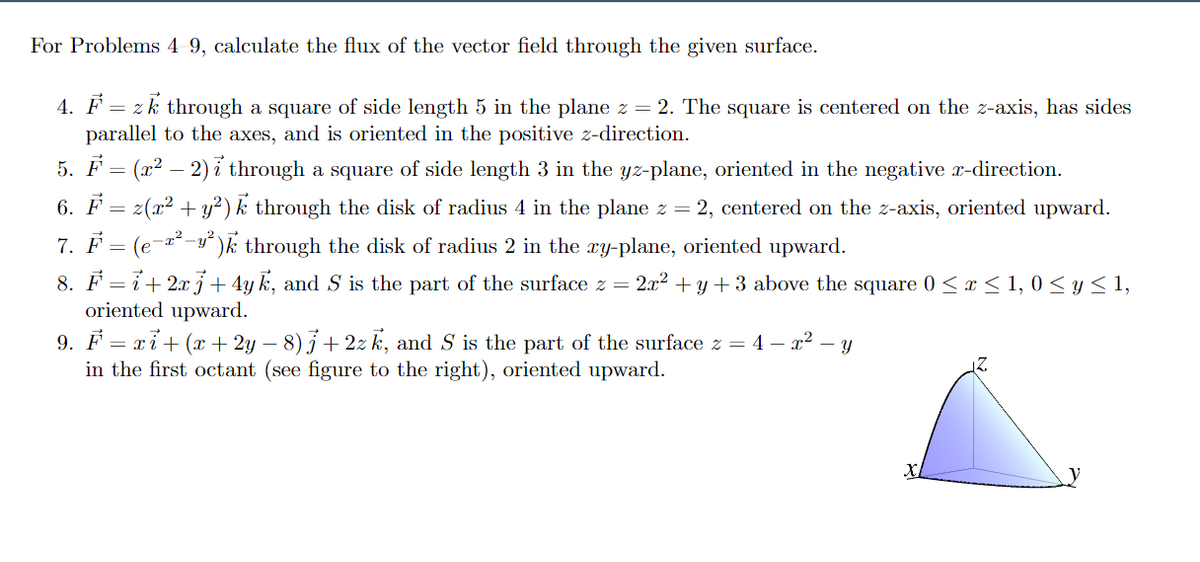Physics for Scientists and Engineers, Technology Update (No access codes included)
9th Edition
ISBN:9781305116399
Author:Raymond A. Serway, John W. Jewett
Publisher:Raymond A. Serway, John W. Jewett
Chapter24: Gauss’s Law
Section: Chapter Questions
Problem 24.10OQ: A cubical gaussian surface is bisected by a large sheet of charge, parallel to its top and bottom...
Related questions
Question
How to slove this question

Transcribed Image Text:For Problems 4 9, calculate the flux of the vector field through the given surface.
4. F = zk through a square of side length 5 in the plane z = 2. The square is centered on the z-axis, has sides
parallel to the axes, and is oriented in the positive z-direction.
5. F
(x2 – 2) i through a square of side length 3 in the yz-plane, oriented in the negative r-direction.
6. F = z(x2 + y²) k through the disk of radius 4 in the plane z = 2, centered on the z-axis, oriented upward.
7. F = (e-x²
-y')k through the disk of radius 2 in the ry-plane, oriented upward.
8. F = 7+2xi+ 4y k, and S is the part of the surface z = 2x2 + y + 3 above the square 0 < x < 1, 0 < y < 1,
oriented upward.
9. F = xỉ+ (x + 2y – 8)3+ 2z k, and S is the part of the surface z = 4 – x? – y
in the first octant (see figure to the right), oriented upward.
Expert Solution
This question has been solved!
Explore an expertly crafted, step-by-step solution for a thorough understanding of key concepts.
This is a popular solution!
Trending now
This is a popular solution!
Step by step
Solved in 2 steps

Knowledge Booster
Learn more about
Need a deep-dive on the concept behind this application? Look no further. Learn more about this topic, physics and related others by exploring similar questions and additional content below.Recommended textbooks for you

Physics for Scientists and Engineers, Technology …
Physics
ISBN:
9781305116399
Author:
Raymond A. Serway, John W. Jewett
Publisher:
Cengage Learning

Classical Dynamics of Particles and Systems
Physics
ISBN:
9780534408961
Author:
Stephen T. Thornton, Jerry B. Marion
Publisher:
Cengage Learning


Physics for Scientists and Engineers, Technology …
Physics
ISBN:
9781305116399
Author:
Raymond A. Serway, John W. Jewett
Publisher:
Cengage Learning

Classical Dynamics of Particles and Systems
Physics
ISBN:
9780534408961
Author:
Stephen T. Thornton, Jerry B. Marion
Publisher:
Cengage Learning
